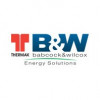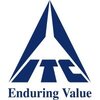

Thermax Babcock Wilcox Energy Solutions




10+ Thermax Babcock Wilcox Energy Solutions Interview Questions and Answers
Q1. Ash seave analysis, how to reduce LOI of Bed Ash fly ash etc.
To reduce LOI of Bed Ash fly ash, ash seave analysis can be done and the following steps can be taken.
Ash seave analysis can help identify the particle size distribution of the ash.
The LOI can be reduced by controlling the combustion process and ensuring complete combustion.
Adding additives like limestone or activated carbon can also help reduce LOI.
Proper maintenance of the boiler and ash handling system can also prevent the accumulation of unburnt carbon.
Regular cleaning of...read more

Q2. Which welding types Ans T,joints But,joints Iab,joints Cornar,joints Aej,joints Top to botam and botam to top
There are various types of welding, including T-joints, butt joints, lap joints, corner joints, and top-to-bottom and bottom-to-top welding.
T-joints involve welding two pieces of metal perpendicular to each other, forming a T shape.
Butt joints involve welding two pieces of metal end-to-end.
Lap joints involve welding two pieces of metal that overlap each other.
Corner joints involve welding two pieces of metal that meet at a corner.
Top-to-bottom and bottom-to-top welding involv...read more

Q3. What Boiler efficiency, APC Heat rate Coal GCV
Boiler efficiency, APC Heat rate and Coal GCV are important factors in determining the performance of a boiler.
Boiler efficiency is the ratio of energy output to energy input and is affected by factors such as combustion efficiency, heat transfer efficiency, and radiation losses.
APC Heat rate is the amount of heat energy required to produce a unit of electricity and is affected by factors such as boiler efficiency, steam turbine efficiency, and generator efficiency.
Coal GCV (...read more

Q4. Whate is welding definesan Ans Two meatl part burn and parmnant melt joint
Welding is the process of permanently joining two metal parts by melting and fusing them together.
Welding involves the use of heat to melt the base metals and a filler material to create a strong joint.
Different welding techniques include TIG (Tungsten Inert Gas) and ARC (Shielded Metal Arc) welding.
TIG welding uses a non-consumable tungsten electrode to create the arc and requires a separate filler material.
ARC welding uses a consumable electrode coated in flux to create the...read more

Q5. Welding position in pipes Ans 1g,2g,3g,4g,5g,6g all welding position
Welding positions in pipes include 1g, 2g, 3g, 4g, 5g, and 6g.
1g is a flat position with the pipe in a horizontal position
2g is a horizontal position with the pipe in a vertical position
3g is a vertical position with the pipe in a fixed position
4g is a fixed position with the pipe in a horizontal position
5g is a horizontal position with the pipe at a 45-degree angle
6g is a fixed position with the pipe at a 45-degree angle

Q6. Welding joints types Ans 6 joints types in welding
There are 6 types of welding joints: butt joint, lap joint, corner joint, tee joint, edge joint, and scarf joint.
Butt joint: two pieces of metal are joined end-to-end
Lap joint: two pieces of metal overlap and are joined together
Corner joint: two pieces of metal are joined at a right angle
Tee joint: two pieces of metal are joined at a T-shaped intersection
Edge joint: two pieces of metal are joined along their edges
Scarf joint: two pieces of metal are joined by overlapping and ...read more

Q7. Explain about steam,water, flue gas,ash handling, Fuel handling system?? What is SSC AND SFC? what is meaning of Boiler,type of Boiler?? Specification of Boiler and Turbine?? DCS system of automation? WHAT is F...
read moreThe Control Room Engineer is expected to have knowledge about steam, water, flue gas, ash handling, fuel handling system, boiler, turbine, DCS system of automation, FCV, feed contact stations, and three or single element system.
Steam is used to generate power in a power plant.
Water is used as a coolant in the condenser.
Flue gas is the exhaust gas from the combustion process.
Ash handling system is used to handle the ash generated from the combustion process.
Fuel handling syste...read more

Q8. What is basic of Boiler and it's purpose in Industrial usage?
A boiler is a closed vessel that generates steam by heating water. It is used in various industries for heating and power generation.
Boilers are used in industries such as power generation, chemical processing, and food and beverage production.
The basic purpose of a boiler is to convert water into steam, which can be used for heating, power generation, or other industrial processes.
Boilers work by heating water to its boiling point, which produces steam that is then used for ...read more


Q9. How does fuel handling system works?
Fuel handling system manages the storage, transfer, and distribution of fuel to the power plant.
Fuel is stored in large tanks and transported to the power plant through pipelines.
The fuel is then transferred to the boiler where it is burned to produce steam.
The steam is then used to turn the turbines which generate electricity.
The system also includes safety measures to prevent accidents and ensure proper functioning.
Regular maintenance and inspections are necessary to ensure...read more

Q10. What are the types of boilers and and process of its installation?
Types of boilers include fire tube, water tube, and electric boilers. Installation process involves site preparation, assembly, piping, and testing.
Types of boilers: fire tube, water tube, electric
Installation process: site preparation, assembly, piping, testing
Examples: Fire tube boiler - used in small industrial plants, Water tube boiler - used in power stations

Q11. What is Thermax product portfolio where you had heard about Thermax?
Thermax offers a wide range of products including boilers, heaters, chillers, water treatment solutions, and waste heat recovery systems.
Boilers
Heaters
Chillers
Water treatment solutions
Waste heat recovery systems

Q12. Turbine specifications?
Turbine specifications refer to the technical details of the turbine used in power generation.
Turbine specifications include the type of turbine, its capacity, efficiency, and operating conditions.
The type of turbine can be either steam or gas turbine.
Capacity refers to the amount of power the turbine can generate.
Efficiency is the ratio of the energy output to the energy input.
Operating conditions include the temperature, pressure, and speed at which the turbine operates.

Q13. Have you worked on boilers before?
Yes, I have experience working on boilers in previous roles.
I have experience with boiler maintenance, troubleshooting, and repair.
I am familiar with different types of boilers such as fire tube, water tube, and electric boilers.
I have worked on optimizing boiler efficiency and ensuring compliance with safety regulations.
I have conducted regular inspections and tests to ensure proper functioning of boilers.





Top HR Questions asked in Thermax Babcock Wilcox Energy Solutions
Interview Process at Thermax Babcock Wilcox Energy Solutions

Top Interview Questions from Similar Companies









Reviews
Interviews
Salaries
Users/Month












